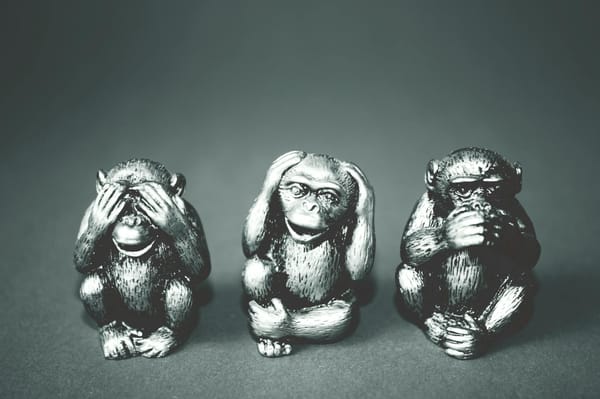Protests erupted across Canada in recent weeks after Israel launched an aerial bombardment of Gaza, which has thus far killed more than 9,061 Palestinians (including at least 3,760 children). In cities throughout the country, thousands of people have come out to call for a ceasefire, protest and engage in direct action.
Simultaneously, some media outlets, politicians and pro-Israel groups have attempted to create an ostensibly two-sided framing of ongoing events, whereby those protesting to try to stop a genocide in Gaza and others who claim to feel threatened by the protests need to both be given consideration. In reality, and as one of Canada’s major pro-Israel groups has made explicitly clear, the goal is not to consider ‘both sides’ but to have some pro-Palestine protests banned.
One familiar aspect of this narrative, which is increasingly being challenged, is portraying the protests as antisemitic. Another, less remarked upon, component is depicting the protests as happening during a time of “rising antisemitism.” In this narrative, the problem isn’t solely, or even necessarily, that the protests themselves are antisemitic, but rather that antisemitism is particularly rampant at the moment and so even rallies that would otherwise be OK are dangerous to Jewish people in Canada.
For example, on October 25, the Centre For Israel and Jewish Affairs (CIJA) tweeted the following about a candlelight vigil being held in Toronto to mourn the Palestinian civilians killed that month: “There should be NO place in our society for the glorification of murderers who kidnap children & invade civilian communities to commit a massacre of 1,400 people. At a time of rising #Antisemitism, such an event is not only inappropriate but dangerous. These celebrations of terror must be condemned!”
Other pro-Israel organizations, as well as politicians and media outlets, expressed similar sentiment: the issue was not just that the peaceful vigil was supposedly antisemitic, but that its occurrence during a time of “rising antisemitism” made it dangerous and worthy of being banned.
Even many who are typically critical of pro-Israel narratives seemingly haven’t bothered to examine the idea that antisemitism is rising at this point, and have just run with it. That’s a mistake for several reasons.
First, no empirical claim made should be immune from scrutiny or questioning. Second, this claim deserves extra scrutiny because it’s being used in an attempt to ban protests, which would be a serious infringement upon civil liberties. Third, there have been some valuable critiques of this claim released in recent years, particularly the must-read 2021 report by Independent Jewish Voices Canada (IJV) member Sheryl Nestel called, “The Use and Misuse of Antisemitism Statistics in Canada.”
B’nai Brith, a pro-Israel lobby group that “supports the Jewish right to self-determination on our ancestral lands,” is one of the organizations that called for the Toronto vigil to be banned, with its CEO stating in a since-deleted press release: “The Jewish community is not willing to tolerate any further incitement that puts us at risk. [...] Queen’s Park has the tools to stop tonight’s hatefest. Now is the time to use them.” It’s also the organization responsible for releasing nearly 40-years worth of annual audits which document all cases of antisemitism reported to them.
Almost every year, particularly in the past 20 or so, the release gets print, radio and television media coverage, as well as remarks from Canada’s most prominent politicians. Moreover, those warning about rising antisemitism, including as a reason to ban pro-Palestine protests, often cite this data. As such, in order to take a critical look at the idea of rising antisemitism, I acquired and examined every available antisemitism audit released by B’nai Brith from 1982 to 2022.
To start, I looked at each report’s overall finding and how it was reported by the media or described in press releases to see if antisemitism supposedly rose or fell each year. Here’s what I found, for every year where the report and/or reporting about it was available.
1982: “Anti-semitism on rise, B’nai B’rith reports”
1983: “Anti-Semitism down, says B’nai Brith study”
1984: “Increase shown in number of acts of anti-Semitism”
1988: “Anti-Semitism on the rise in Canada, B’nai B’rith says”
1989: “Anti-Semitism up: Report”
1990: “Anti-Semitism keeps climbing, says B’nai Brith”
1991: “Anti-Semitism at highest level in decade, B’nai Brith reports”
1992: “Growing anti-Semitism ’disturbing,’ B’nai Brith says”
1993: “B’nai Brith report says anti-Semitism on increase”
1994: “Anti-Semites spreading hate in cyberspace says Jewish group”
1995: “Jews in Canada face more anti-semitism”
1996: “Anti-Semitic incidents declined in 1996”
1997: “Anti-Semitism falls again: But Internet grows as hotbed of hate, B’nai Brith reports”
1998: “Anti-Semitism on rise in Canada, audit finds”
1999: “Incidences of anti-Semitism up in Canada”
2000: “Anti-Semitism is on the rise: B’nai Brith”
2001: “B’nai Brith Canada reports sharp rise in anti-Semitic incidents”
2002: “Anti-Semitism on the rise”
2003: “Anti-Semitic hate crimes on rise, says B’nai Brith”
2004: “B’nai Brith says anti-Semitic incidents are on the rise”
2005: “Anti-Semitism at record high”
2006: “Anti-Semitic incidents soaring, B’nai Brith says”
2007: “Anti-Semitic incidents hit record high, report finds”
2008: “Anti-Semitic incidents on the rise, B’nai Brith warns”
2009: “B’nai Brith Canada says reports of anti-Semitism at all-time high”
2010: “Anti-Semitism on rise; New report worries B’nai Brith”
2011: “B’nai Brith audit shows rise in acts of anti-Semitism”
2012: “Anti-Semitic acts on the rise, B’nai Brith says”
2013: “While a decrease is always welcome, the incidents reveal the unrelenting nature of antisemitism in Canada.”
2014: “The year 2014 saw the highest number of antisemitic incidents ever recorded by B’nai Brith”
2015: “Antisemitic Harassment on the Upswing in Canada: B’nai Brith Audit”
2016: “Anti-Semitic incidents on the rise in Canada: B’nai Brith”
2017: “Anti-Semitic incidents on the rise: B’nai Brith”
2018: “Record number of anti-Semitic incidents fuelled by online hate: B’nai Brith”
2019: “Number of anti-Semitic incidents on the rise”
2020: “Anti-Semitic acts jump 18.6% in 2020, says B’nai Brith report”
2021: “Canada Saw Record Levels Of Antisemitism In 2021, Audit Finds”
2022: “Antisemitic incidents down slightly after all-time high in 2021, B’nai Brith says”
If we were to accept the idea that rising antisemitism means Palestine protests should be banned, these rallies should have been made illegal in all but the following five years examined since 1982: 1983, 1996, 1997, 2013 and 2022.
This would certainly be convenient for Israel and its most ardent supporters, but I think it’s fair to say the majority of people in Canada would be opposed to such restrictions. One way to address this would be to argue that antisemitism being on the rise doesn’t mean pro-Palestine protests should be banned, and that is, in fact, how I feel. But I also don’t believe it’s worth accepting B’nai Brith’s claims of rising antisemitism without a closer look at the data.
To get a better understanding of what this supposed decades-long rise in antisemitism has looked like, we have to examine the figures from the reports. The chart below shows the numbers from 2002 onward, which is when B’nai Brith added “violence” as a category of antisemitic incident (prior to that, all incidents were either categorized as “harassment” or “vandalism”).
This 21-year period saw 16 annual reports proclaiming that antisemitism had risen to new heights, and indeed, if you look at the green “total” line it does appear as if that’s what happened. But look a bit closer at the red, blue and orange lines, which mark violence, vandalism, and harassment, respectively.
With the exception of 2021 where recorded incidents of violence did rise — though there’s good reason to be skeptical, given one of the main cases cited as an anti-Jewish assault was people responding to being attacked by knife-wielding Jewish Defence League members — the level of violence has remained within the same range over this period of time: a median of 19 incidents per year. Violence went down in 10 of the 20 years examined.

Vandalism, meanwhile, has had multiple multi-year dips, with the most recent level barely exceeding numbers from decades ago. Vandalism went down in nine of the 20 years examined.
The only type of incident that has increased the majority of the time is harassment, going up in 14 of the 20 years examined, and accounting for an overwhelming majority of all incidents per year in recent years.
B’nai Brith’s harassment category includes online harassment, which could be as isolated as a single reported tweet, according to what University of Toronto professor Robert Brym was told by the national director of B’nai Brith’s League For Human Rights. In the past four years, online harassment incidents have made up a significant chunk of the overall total of incidents per year: 80 per cent in 2018; 76 per cent in 2019; 68 per cent in 2020; 75 per cent in 2021; 74 per cent in 2022.
Online harassment is certainly nothing to scoff at, and in some cases it has been the precursor to much worse. The issue, however, is that despite B’nai Brith’s reports categorizing different antisemitic incidents, the headlines they use and that media outlets run with, which can be all readers see, often do not do so. Readers just get a general statement about antisemitism going up, and through a combination of the framing and their own lack of interest in actually reading the report, they may imagine skyrocketing violence and vandalism. It’s fair to question how many even know something as isolated as a tweet could count as an incident.
It’s also very possible that online harassment has genuinely risen in recent years given, for example, the spread of QAnon-style conspiracy theories, a resurgence of open neo-Nazism, far-right elements of the Ukrainian diaspora being emboldened, etc. But, as Brym notes in his 2019 academic article about these reports, the rise can be at least partly attributed to “increased publicity, ease of reporting and new sources of information.” The longer the audit is being run, the more people know about it, meaning a potential increase in the number of those who could possibly report something. The easier it becomes to report, the more likely people are to do it. The more posts on social media there are, the more likely it is that the number of them meeting the group’s definition for people to report will increase.
In short, the significant rises in antisemitism noted in B’nai Brith reports have come largely from an increased number of reports about online posts. This trend may indicate an overall rise in actual antisemitism of the sort, the reporting program being more popular or a combination of the two. Regardless, the rise is likely not what people think of when they come across headlines for these reports or statements from politicians on them.
More importantly for the purpose of this article, these numbers also don’t tell us anything about alleged antisemitism coming from those who are pro-Palestine.
A crucial problem with B’nai Brith’s audits, as noted in IJV’s report about them, is the lack of transparency. The most recent audit, for example, states that there were 2,769 incidents of reported antisemitism in 2022. And yet, it only describes a handful of them at all, leaving the vast majority unavailable to the public to examine. It’s likely that somewhere out there a spreadsheet of sorts exists with all of these incidents broken down by type and date — we just can’t see it.
This means a few things. First, we can’t determine what sort of antisemitism took place in each incident or what sort of person or group was responsible for it. Because no such transparency exists, we can’t know how much of the rise in online harassment is coming from supporters of Palestine, for example, as opposed to neo-Nazis. Second, we also can’t determine if all of the incidents included are, in fact, genuine cases of antisemitism.
But here’s what we do know.
1) Since the very inception of the audits, there has been a particular focus placed on documenting alleged examples of antisemitism pertaining to Israel
The fact that B’nai Brith began preparing annual audits in 1982 isn’t a coincidence. That year, Israel invaded Southern Lebanon and became the subject of international condemnation for its actions. As I’ve written, “An international commission investigating the illegal invasion found that Israel constantly violated international law throughout it, including by making use of banned weapons, subjecting prisoners to illegal treatment, bombing non-military and civilian targets such as hospitals and schools, and being involved in the Sabra and Shatila massacre.”
B’nai Brith found the media coverage of Israel’s conduct to be a problem, and cited it as a reason for launching the annual audit. It also acknowledged that putting together the audits to include this sort of coverage as hateful would “involve necessarily some redefining of traditional notions of anti-Semitism and serious reorientation of long-held convictions about the nature of its sources.”
An essay by a B’nai Brith cabinet member included in this initial report bolstered the goal of framing criticism of Israel as antisemitic. The article was titled, “The Influence Of The Propaganda War Against Israel On The Situation Of Anti-Semitism In Canada.” The abstract, meanwhile, notes, “The article argues that there has been a change in the nature of anti-Semitism in Canada as a result of Israel’s attempt to destroy the ‘P.L.O. in Lebanon.’ The author suggests that criticism of Israel [...] has been firmly established for the purpose of a propaganda campaign against the Jews.”
The author explains that he believes criticism of Israel in Western media changed after the invasion began, going from being “sporadic” to having “the appearance of being organized and orchestrated.” This, the author claims, marks a resurgence of antisemitism following a “hiatus of a generation in the acceptability and legitimacy of overt anti-Semitism in Canada, beginning in the early 1950s and already waning towards the end of the 1970s.” The author adds, “From an historical point of view taking into account at least two thousand years of Jewish history, any general distinction between attacks on Jews in the diaspora and against Israel is arbitrary.”
With this in mind, we can see that the antisemitism audits were launched in direct response to Israel receiving unprecedented international condemnation, and the founders explicitly set out to label such critique as bearing no difference from anti-Jewish hatred.
2) Since 2005, B’nai Brith has used a definition of antisemitism that has been harshly criticized for conflating anti-Zionism and anti-Jewish hatred
There has been a great deal of discussion in the past seven years or so about how the International Holocaust Remembrance Alliance’s (IHRA) definition of antisemitism has conflated anti-Zionism with anti-Jewish hatred. This has been argued by Palestinians, Jews, academics, human rights groups and other organizations.

Much of this debate took place after the definition was adopted by IHRA in 2016. The definition, however, has existed for much longer. It was developed by the European Monitoring Centre on Racism and Xenophobia in the early 2000s and published in 2005. It remained a working draft for the next decade that wasn’t formally reviewed and was used by few groups. B’nai Brith, however, was one of them, beginning to use the definition in its audits more or less as soon as they could. This means that every single report since at least 2005 has been conducted using a deeply flawed definition of antisemitism to equate anti-Zionism with it.
This usage has led to vast disparities between B’nai Brith’s audits and even reports from another right-wing, Zionist organization, the Anti-Defamation League (ADL).
For example, as Nestel noted in her report critiquing B’nai Brith’s audits: “In their 2019 Annual Audit of Antisemitic Incidents, the U.S. Anti-Defamation League reported a total of 2,107 incidents of antisemitism in the U.S., including 1,127 cases of harassment, 919 cases of vandalism, and 995 incidents of assault including 5 deaths. The ADL 2019 Audit encompasses a U.S. Jewish population of approximately 6.97 million. The B’nai Brith 2019 Audit, on the other hand, reported 2,207 antisemitic incidents in Canada - a country that is home to approximately 392,000 Jews. In other words, the B’nai Brith Audit claims that an equal number of antisemitic incidents has taken place in Canada despite the fact that the U.S. has a population 9 times that of Canada and has 17 times as many Jews. Are Canadian Jews 17 times more likely than their American counterparts to experience antisemitism?”
But this was not a one-time case. Here’s a chart showing the number of antisemitic incidents reported by the two groups since 2005, wherein B’nai Brith’s numbers often outright exceed those from the ADL and otherwise never get anywhere close to being proportionately lower for the population difference.
This definition of antisemitism and system of counting incidents makes it almost inevitable that antisemitism will be ‘on the rise’ during times where Israel is bombing Gaza, as groups such as B’nai Brith and its allies often point out. Israel bombing Gaza leads to heightened criticism of Israel. Most criticism of Israel is deemed antisemitic by B’nai Brith’s definition. Therefore, a rise in criticism of Israel as a result of its military actions will inevitably lead to a rise in antisemitism according to this definition. And if such a rise in antisemitism should mean pro-Palestine protests must be banned, then the rallies would effectively have to be banned every time Israel attacks Gaza.
3) The press releases, reports and public statements of those associated with B’nai Brith seemingly mention antisemitism pertaining to Israel more frequently and with greater detail than other sorts
While B’nai Brith doesn’t offer a publicly accessible description of each incident per year, they do pull out some in their reports and press releases, and make public statements pertaining to the nature of them online. These often focus on activity related to criticism of Israel. For example, four of the five most-recent reports mention things related to Israel in their introductions while just one of them mentions the activity of white supremacists. The particular focus on criticisms of Israel is also apparent in the “sample incidents” included in the reports, where, for example, a bus ad reading, “The State of Israel practices Apartheid” is equated with headstones being toppled at a Jewish cemetery.
There are two possible conclusions to take away from this trend.
First, the focus on antisemitism linked to Israel could mean that it accounts for a larger chunk of online harassment, and thereby the supposed increases in antisemitism, than incidents with a different sort of theme, focus, or source. If true, that means there’s more reason to cast doubt on the overall idea of antisemitism rising given that B’nai Brith has repeatedly shown that it considers anti-Zionism of all sorts to be anti-Jewish hatred. After all, if Zionists often label things that aren’t antisemitic as such, as most admit, there’s more than a chance that a “rise in antisemitism” based on increased activity related to criticism of Israel is not actually that at all.
Second, if alleged antisemitism pertaining to Israel does not make up the largest chunk of online harassment or other types of incidents, it’s dishonest for B’nai Brith to focus on it so heavily as this gives the misleading impression that it’s more common or dangerous than it may actually be.
Neither conclusion is great for the reliability of these antisemitism audits, which are referenced in many attacks on pro-Palestine activity for allegedly being dangerous to Jewish people.
The antisemitism audits in question lack transparency, and I believe they’re likely deeply flawed based upon the factors I’ve discussed. Some members of the Jewish community have implied that this is by design on the part of the groups behind these audits.
The IJV report by Nestel, for example, argues that B’nai Brith “cannot be be understood as a neutral source for reporting on the nature and scope of antisemitism in Canada,” in part because it has a “financial interest (its fundraising relies largely on its positioning as the premier opponent of antisemitism in Canada) in touting increases in antisemitism.”
Of course, this sort of suggestion can and often is unfairly aimed at any sort of group that does work ostensibly to help out others (including, more recently, those doing harm reduction work pertaining to drugs), and even if accurate, there’s little about it that’s necessarily particular to the groups in question.
What is more unique, however, is the practical purpose the reports serve to the Israeli government and pro-Israel lobby groups and their allies in the media and Canadian politics.
In a critical report about the IHRA definition released in 2020, IJV wrote, “Labelling critics of Israel’s laws, policies or actions as antisemites is designed to divert attention from the fact that Israel is an oppressive military superpower that is occupying Palestinian lands and subjecting Palestinian citizens of Israel to a range of discriminatory laws. Fabricated charges of antisemitism serve to shut down all debate regarding Israel by perpetuating the myth that Israel, and by extension Jews in general, are in existential danger.”
As noted in the introduction to the article, we clearly see this happening right now, with groups that have called for bans on pro-Palestine protests or even vigils referring to ‘rising antisemitism’ as a motivating factor.
Antisemitism remains a problem in Canada. It should be taken seriously. But the narrative of ‘rising antisemitism’ is being used in an attempt to distract attention from the ongoing genocide in Palestine and undermine those assembling to do their best to stop it. With that in mind, it deserves a level of widespread scrutiny it has thus far not received.








